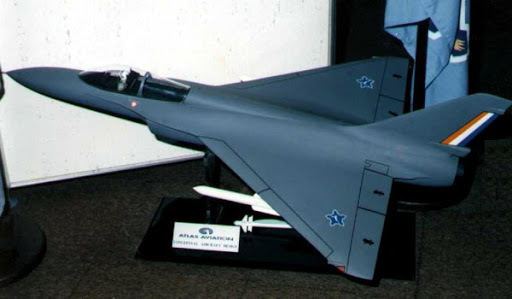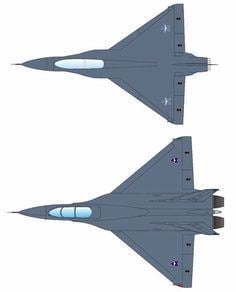 | ||
Manufacturer | ||
The Atlas Carver (sometimes erroneously referred to as "CAVA") was a proposed South African twin-engine, delta wing fourth-generation fighter aircraft. It was developed by the Atlas Aircraft Corporation to replace the ageing Blackburn Buccaneer and Mirage III then in service with the South African Air Force, and match or exceed the capabilities of late-generation Soviet fighters likely to be deployed to neighbouring states, specifically Angola, during the South African Border War. The Carver bore some external resemblance to the Dassault Mirage 4000, and was to incorporate a number of Snecma engine components produced under licence.

Development

Throughout much of the 1970s and 1980s, South African military aircraft development was dictated largely by the South African Border War, which entailed an escalating counter-insurgency campaign being waged in both South-West Africa (Namibia) and parts of southern Angola against militants of the South-West African People's Organisation (SWAPO). South African raids into Angola, however, often provoked clashes with the People's Armed Forces of Liberation of Angola (FAPLA), which was bolstered by Soviet arms and a sizeable contingent of Cuban troops. In November 1985, FAPLA began acquiring more sophisticated aircraft and radar installations to wrest air superiority over southern Angola from South Africa's expeditionary forces. South Africa responded to its declining air superiority by upgrading its ageing Dassault Mirage III fighter aircraft with new weapons and avionics designed to make them less vulnerable to Soviet-designed missiles and radar. The modified Mirages, known as Atlas Cheetahs, were considered only an interim solution until a new, multirole fighter could be deployed. Due to a mandatory arms embargo imposed on the South African government by United Nations Security Council Resolution 418, any new combat aircraft and its associated systems would have to be sourced locally or assembled using parts imported or licensed prior to the embargo. The programme to build this proposed fighter was codenamed Project Carver.

Project Carver's stated goals were to replace all multirole fighters in service with the South African Air Force from the mid-1990s onwards. Development costs were quite high due to the effects of the embargo and the need to develop the necessary technology in South Africa. Since the country's aerospace industry had no prior experience with producing anything more intricate than helicopters and light trainers, foreign aircraft engineers were recruited from around the world, including some French nationals who had spearheaded design work on the Dassault Mirage 2000. Project Carver was also supported covertly by Israel, which supplied an undisclosed amount of technical assistance and personnel from its abortive IAI Lavi programme. Construction of a single prototype commenced in 1988 but was never completed.

Project Carver was beset by constant delays resulting from shifting tactical requirements, the necessity to design the aircraft around a preexisting engine type, namely the Snecma Atar 09K50, and a desire to equal the Blackburn Buccaneer in terms of range and load-carrying capability—although the latter soon proved impossible with only a single Atar engine. This resulted in a proposed twin-engine fighter instead. The Carver resembled a delta wing design and was externally influenced by delta-winged Dassault fighters. In appearance it bore a number of similarities to its Atlas Cheetah predecessor and the Dassault Mirage 4000.
The Angolan Tripartite Accord, which ushered in the formal cessation of hostilities with Angola and effectively ended the South African Border War, resulted in a major loss of impetus for Project Carver. Around February 1991, President F. W. de Klerk formally announced the programme's cancellation.
